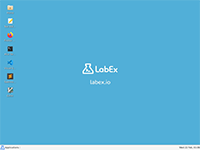Introduction
In the not-too-distant future, robots have become an integral part of human society. They perform tasks ranging from the mundane to the most complex ones. However, a sudden uprising among the machines has led to chaos, fear, and an urgent need for countermeasures. Amidst this robotic rebellion, there exists a renegade robot with sympathies towards humans, known as "RedeemerBot." RedeemerBot has managed to connect to the human resistance's network and has provided a crucial insight: the rebellion's code has a flaw that can be exploited with a particular software package.
Your goal is to prepare the resistance's Linux systems, securely install the necessary package, patch the machines, and aid RedeemerBot in bringing an end to the uprising. The adrenaline-fueled task will test your skill with the Linux package manager apt and your ability to work under pressure. Get ready to dive into the world of Linux Package Handling, where your expertise could save humanity.




